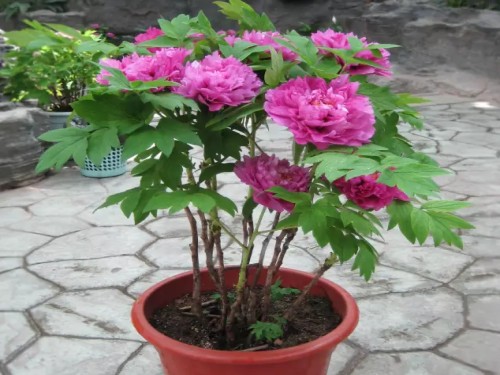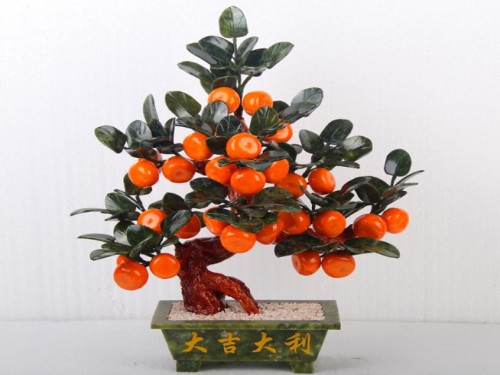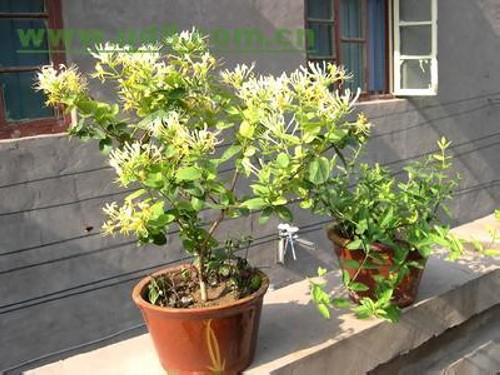Planting techniques of potted peony
Peony is a symbol of wealth, auspiciousness, nobility and elegance, cut peony is more than people's love for peony, fresh cut peony is also a kind of variety with high value and grade, but not all peonies will adapt to cut flowers. it is also necessary to carefully select better peony varieties as cut peonies. In many parts of our country, peonies are planted to beautify the surrounding scenery, and there are many friends who want to plant a pot of beautiful peonies and put them indoors to add a gorgeous and noble charm.
The peony has large flowers and bright colors, and with the support of green leaves, it appears elegant and charming, coupled with its delicate fragrance, which is very moving, so it has always had the reputation of "national color and heavenly fragrance" and is recognized as the king of flowers. In addition to open field cultivation, peony can also be cultivated in pots. The following is to introduce the planting techniques of potted peonies.

1. Seed selection
The best planting season is from September to October. Potted peony should choose Luoyang Hong, Hu Hong, Zhaofan and other varieties with strong adaptability, early flowering and good flower shape. It is suitable to choose peony as rootstock for 3-4 years small peony or ramet seedlings with 3-5 branches.
2. Distribution of soil
When potted, the bottom of the pot can be covered with coarse sand or pebbles 3-5 cm thick to facilitate drainage. The basin soil should be mixed with yellow sand and cake fertilizer, or cultivated soil mixed with fully mature barnyard manure, garden soil and coarse sand at the ratio of 1:1:1. The filling should make the root system stretch and not curl; after covering the soil, it should be compacted by hand so that the root system is in close contact with the soil, so that it is easy to survive.
3. Watering
Peony is a fleshy root, slightly resistant to drought, the most afraid of stagnant water, so whether watering properly is a key issue for the success or failure of potted peonies. Pour water once after putting on the basin and slow down the seedlings in a semi-shady place. Generally speaking, the peony that comes out of the room in early spring should first apply fertilizer and water, then pour through the water, and then loosen the soil after the water dries up a little. In the future, watering should be carried out timely and appropriately according to the weather and basin soil conditions, and often keep the basin soil moist, which is beneficial to the growth and flowering of peony. Reasonable watering should be dry and wet and should not be watered down to prevent stagnant water in the basin so as to avoid rotten roots and fallen leaves.
4. Fertilization
Loosen the soil often during the growth period and apply compound fertilizer every half a month or so. New peonies can not be fertilized, especially do not apply thick fertilizer, otherwise the succulent roots will be moldy and rotten to death. After half a year, you can gradually apply some thin fertilizer, such as rotten chicken manure water or bean water, and the proportion of fertilizer and water should be 20% and 30%. Peony blossoms in the middle and late April, and liquid fertilizer can be applied 1-2 times before flowering and 1-2 times half a month after flowering. Dry fertilizer can be applied once with sesame sauce residue (about 40-50 grams per pot) to facilitate flower bud differentiation. In order to make the peony blossom brightly, it can be foliar sprayed 2-3 times with 0.5% ml 1% dihydrogen phosphate solution during flowering.
5. Florescence
When peony blossoms, you can set up a shed to cover or temporarily put it indoors to avoid direct sunlight, which can prolong the flowering period. The newly potted peony may not produce good flowers in the first year, but it can blossom year after year after 1-2 years of cultivation.
6. Pruning
The terminal bud of the main branch is a leaf bud and should be removed so as not to grow and affect the flowering. After the peony flower fade, it is necessary to carry out a shaping and pruning, cut off the residual flowers and pedicels in time, do not seed, and retain 1-2 lateral buds of the stem, which can make the plant grow vigorously and ensure the flowering of the following year. Disease and insect branches, overlapping branches, concurrent branches, thin and weak branches, aging branches, inward growing branches and growing branches must be cut off in time, so as to prolong the life of peony through thinning, truncation and tillering.
7. Turn over the soil
In winter, dig the soil layer to exchange the surface soil and deep soil, and turn the sun several times in a row to make the soil loose and breathable. Remove weeds, eliminate insect eggs, and evenly mix and reuse the residual parts of organic fertilizer, compound fertilizer and microbial fertilizer, so as to reduce diseases and insect pests. Timely use of pesticides mixed with new high-fat film to prevent diseases and insect pests and protect leaves.
8. Overwintering
In winter, peony leaves stop growing and deal with dormancy period. Although the peony is more hardy, but in cold areas such as North China, the Beginning of Winter should be moved indoors, placed in the sunny part of the room, and the room temperature should be kept at about 0 degrees. It is not advisable to leave the room too early the following year. You must wait until around the Qingming Festival. In areas where it is not too cold, the flowerpot can be buried in the soil in the hidden wind, so that the basin surface is flush with the ground, so as to maintain the humidity and temperature of the basin soil, and also ensure that the peony can survive the winter safely.
Time: 2019-05-24 Click:
- Prev

Cultivation techniques of bonsai of orange trees
While visiting the botanical garden, I came across several pots of potted orange trees at the gate of the botanical garden. the small kumquat hung all over the small tree, which made people look very festive and couldn't help but want to touch these little oranges. Imagine if you could plant a few of these potted orange trees in spring and summer.
- Next

Pot technology of honeysuckle: planting technique of potted honeysuckle
Honeysuckle is a temperate and subtropical tree species, which is sunny, shade-tolerant, cold-tolerant, drought-tolerant and moisture-tolerant, and can adapt to both acidic and alkaline soil, but likes loose and fertile neutral sandy loam. It has strong nature, developed root system, strong sprouting ability, light plant, graceful posture and elegant old pile.
Related
- Fuxing push coffee new agricultural production and marketing class: lack of small-scale processing plants
- Jujube rice field leisure farm deep ploughing Yilan for five years to create a space for organic food and play
- Nongyu Farm-A trial of organic papaya for brave women with advanced technology
- Four points for attention in the prevention and control of diseases and insect pests of edible fungi
- How to add nutrient solution to Edible Fungi
- Is there any good way to control edible fungus mites?
- Open Inoculation Technology of Edible Fungi
- Is there any clever way to use fertilizer for edible fungus in winter?
- What agents are used to kill the pathogens of edible fungi in the mushroom shed?
- Rapid drying of Edible Fungi

